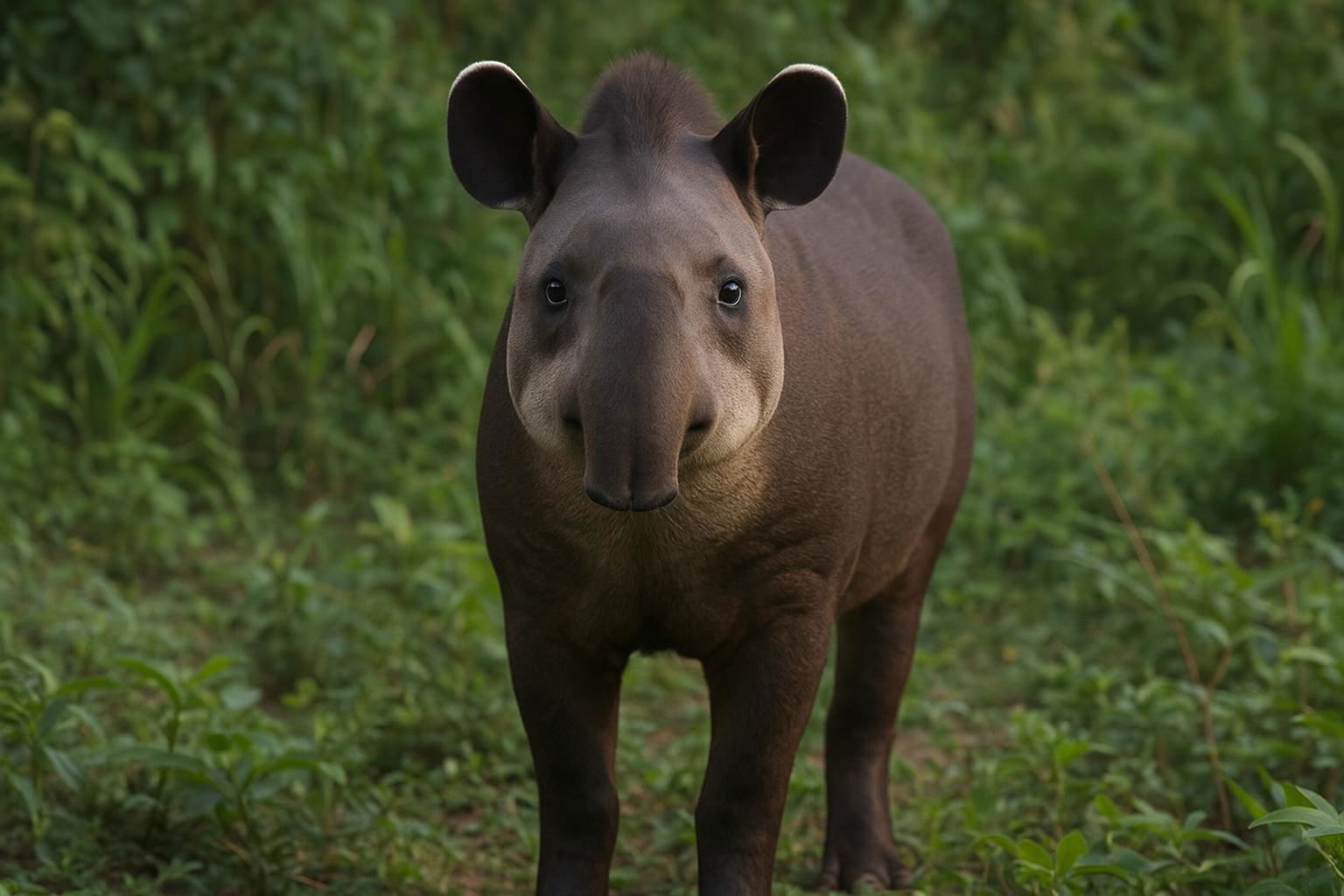
Lowland Tapir
Tapirus terrestris
The Lowland Tapir, scientifically known as Tapirus terrestris, is a distinctive and fascinating member of the order Perissodactyla, which also includes horses and rhinoceroses. Found primarily in South America, particularly in Brazil, Venezuela, Colombia, and other countries with tropical rainforests and grasslands, this mammal is crucial for maintaining the ecological balance of its habitat.
The Lowland Tapir is the largest land mammal in South America and is characterized by a robust body, short, sturdy legs, and an elongated, flexible snout, which is one of its most defining features. This prehensile snout acts much like an elephant’s trunk, facilitating the animal's feeding by grasping foliage, fruits, and other vegetation. This dietary preference makes it an important seed disperser, contributing significantly to forest regeneration.
Adult Lowland Tapirs typically weigh between 150 to 300 kilograms (330 to 660 pounds) and can reach a length of 1.8 to 2 meters (about 6 feet). Their thick, hide-like skin offers some protection against predators, while their dull grayish-brown coat offers effective camouflage within the dense underbrush of their environment. Despite their bulky appearance, they are excellent swimmers and often retreat to water to escape threats or cool off in the heat.
Socially, the Lowland Tapir is a largely solitary creature, except during mating or when a mother cares for her young. Gestation lasts about 13 months, culminating in a single calf with a striking coat of white stripes and spots that fade as it matures. Conservation-wise, habitat destruction and hunting have placed the Lowland Tapir in a vulnerable position, making it essential to protect this unique species and its environment.

 All Species & Breeds
All Species & Breeds
 Highland Cattle
Highland Cattle
 Miniature Donkeys
Miniature Donkeys
 All Species Directory
All Species Directory
 Highland Cattle in Virginia
Highland Cattle in Virginia
 Miniature Donkeys in Texas
Miniature Donkeys in Texas












